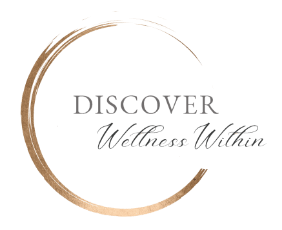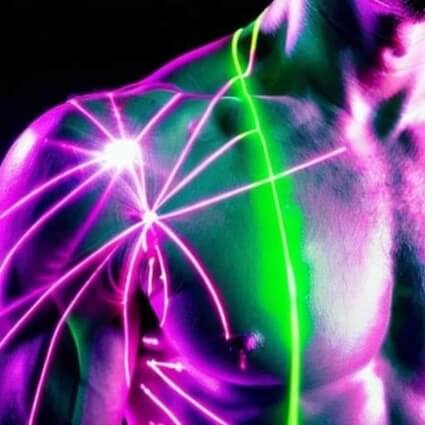Laser Therapy at Discover Wellness Within
What is GVL Low-Level Laser Therapy?
Laser is light amplification at specific wavelengths that have been scientifically proven to create healing properties in human cells. Like a plant cell uses sunlight for growth and health, human cells have been shown to respond to light in a similar way.
Lasers can either be used as a stand-alone or used in conjunction with other modalities and therapies. Because of our vast scope of therapies and conditions we treat you will receive various treatments based on what your needs and exam findings show. If it is indicated that you only need laser therapy it will be provided by itself.
Biological Effects of Laser Therapy
Clinical studies and trials of laser therapy technology indicate the following beneficial effects of low-level laser therapy.
- Anti-Inflammation: Low-level laser therapy creates an anti-edema effect by dilating blood vessels and activating the lymphatic drainage system (which drains swollen areas). This reduces swelling caused by trauma or inflammation.
- Anti-Pain (Analgesic): Low-level laser therapy exerts a very beneficial effect on pain in multiple ways. It partially blocks neural transmission of pain signals to the brain. It decreases nerve sensitivity. Laser light also lessens pain by reducing edema. A fourth pain-blocking mechanism involves the production of high levels of painkilling chemicals such as endorphins, enkephalins and opioids from the brain and adrenal gland.
- Accelerated Tissue Repair and Cell Growth: Photons of light from lasers penetrate deeply into tissues and accelerate cellular reproduction and growth. The laser light also increases the energy available to the cell by increasing ATP production so that the cell can take on nutrients faster and get rid of waste products. As a result of exposure to laser light, all cells, including the cells of tendons, ligaments and muscles are repaired faster.
- Improved Vascular Activity: Low-level laser therapy significantly increases the formation of new capillaries in damaged tissue, which speeds up the healing process, closes wounds more quickly and reduces scarring. Low-level laser therapy also causes vasodilation, an increase in the diameter of blood vessels, which improves the delivery of blood and healing elements to damaged tissues.
- Increased Metabolic Activity: Low-level laser therapy stimulates higher outputs of specific pro-healing enzymes in blood cells, along with improved oxygen and nutrient delivery.
- Trigger Points and Acupuncture Points: Low-level laser therapy stimulates muscle trigger points and acupuncture points on a non-invasive basis, providing musculoskeletal pain relief.
- Reduced Fibrous Tissue Formation: Low-level laser therapy reduces the formation of scar tissue following tissues damaged from cuts, scratches, burns or surgery.
- Improved Nerve Function: Slow recovery of nerves in damaged tissue and result in impaired sensory and motor function. low-Level laser therapy speeds up the process of axonal regeneration and nerve cell reconnection and increases the amplitude of action potentials to optimize muscle action.
- Immunoregulation: Low-level laser therapy directly affects immunity status by stimulating the production of immunoglobulins and lymphocytes and by improving the ease of penetration of white blood cells into damaged tissue.
- Faster Wound Healing: Low-level laser therapy stimulates fibroblast development (fibroblasts are the building blocks of collage, which is predominant in would healing) in damaged tissue. Collagen is the essential protein required to replace old tissue or repair tissue injuries. As a result, low-level laser therapy is effective on open wounds and burns.
Frequently Asked Questions
No. There are heavily researched wavelengths and doses of laser light that have been shown to be the most therapeutic and safest. Research demonstrates that lasers in the range of 630 – 830 nM and doses levels ranging from 0.5 – 10 J/cm2 to be the ideal “sweet spot” for optimal health benefits. This is the reason why the doctors at ACNC only use lasers that meet these specific requirements.
Yes. When used in the ranges mentioned above lasers are one of the safest devices currently used in healthcare. They are non-ionizing, non-thermal, non-invasive, and non-toxic applications so you don’t receive any harmful byproducts. When lasers get too powerful they serve a different purpose such as surgical lasers. These are not “cold lasers”. The only tissues that class 2 lasers are contraindicated with are directly onto the retina.
Research has shown lasers to be helpful in almost every tissue of the human body including brain, muscle, bone, cartilage and ligaments. They stimulate nerve function and growth, decrease pain, decrease inflammation, stimulate anti-oxidant pathways, promote wound healing, decrease scar tissue formation, increase blood flow, stimulate new blood flow and speed up recovery time in almost every injury. Lasers have been shown to be safer and more effective than many drugs and surgeries.
No. Cold laser does not give any perception. The only sensory perception the patient has is if the laser is used with other modalities like electrical stimulation. What are the differences between lasers and regular red light sources? Although red light does range in the same wavelengths as cold laser, it is just scattered photons of energy that aren’t easily absorbed into the body. Red light therapies like infrared do have some therapeutic value on the surface (like burn healing) but don’t have penetration and downstream tissue effects like parallel, coherent waves from true laser diodes.
Take the First Step
Contact Discover Wellness Within today to schedule your appointment. We look forward to meeting you soon!



